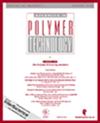纤维缠绕阿巴卡纤维复合材料的物理力学性能研究
IF 2
4区 工程技术
Q3 ENGINEERING, CHEMICAL
引用次数: 1
摘要
采用黄麻纤维和玻璃纤维增强复合材料,测试了纤维缠绕阿巴卡纤维复合材料的性能。使用拉伸、弯曲和动态力学分析来计算复合材料的力学性能。纤维复合材料和玻璃纤维复合材料比阿巴卡纤维基复合材料具有更高的密度和力学性能。这是因为树脂没有进入纤维内部组织结构的细胞腔。阿巴卡纤维复合材料效果最差的是那些纤维被拔出,而表面的纤维被撕裂的复合材料。研究发现,与任何其他复合材料(6000 MPa)。我们发现,海军军械实验室的捻制阿巴卡纤维和捻制阿巴卡纤维制备的周向复合材料具有最低的频率依赖性和性能可变性。为了提高复合材料的性能,加捻阿巴卡纤维的内外结构都需要固定。纤维与树脂的接触也有所增加,纤维表面积也有所增加。纤维的直径也变小了。本文章由计算机程序翻译,如有差异,请以英文原文为准。
Investigation on Physical and Mechanical Properties of Abaca Fiber Composites Using Filament Winding
Composites that were made stronger with jute fiber and glass fiber were used to test the performance of filament wound abaca fiber composites. Tensile, bending, and dynamic mechanical analyses were used to figure out the mechanical properties of the composites. Fiber composites and glass-fiber composites were found to have higher density and mechanical properties than abaca fiber-based composites. This is because resin did not get into the cell cavity of the fiber’s inner tissue structure. The abaca fiber composites that worked the worst were those in which the fibers were pulled out while the fibers on the surface were torn. The fiber-reinforced epoxy circumferential composite interface junction in the twisting abaca fiber circumferential composite was found to be more flexible and have a higher glass transition temperature than any of the other composites (6000 MPa). We found that twisting abaca fiber-naval ordnance laboratory and twisting abaca fiber-prepared circumferential composite had the lowest frequency dependence and performance variability. To improve composite properties, both the outside and inside structures of twisting abaca fiber need to be fixed. There is also a rise in fiber-to-resin contact and a rise in fiber surface area. The diameter of the fibers also gets smaller.
求助全文
通过发布文献求助,成功后即可免费获取论文全文。
去求助
来源期刊

Advances in Polymer Technology
工程技术-高分子科学
CiteScore
5.50
自引率
0.00%
发文量
70
审稿时长
9 months
期刊介绍:
Advances in Polymer Technology publishes articles reporting important developments in polymeric materials, their manufacture and processing, and polymer product design, as well as those considering the economic and environmental impacts of polymer technology. The journal primarily caters to researchers, technologists, engineers, consultants, and production personnel.
 求助内容:
求助内容: 应助结果提醒方式:
应助结果提醒方式:


